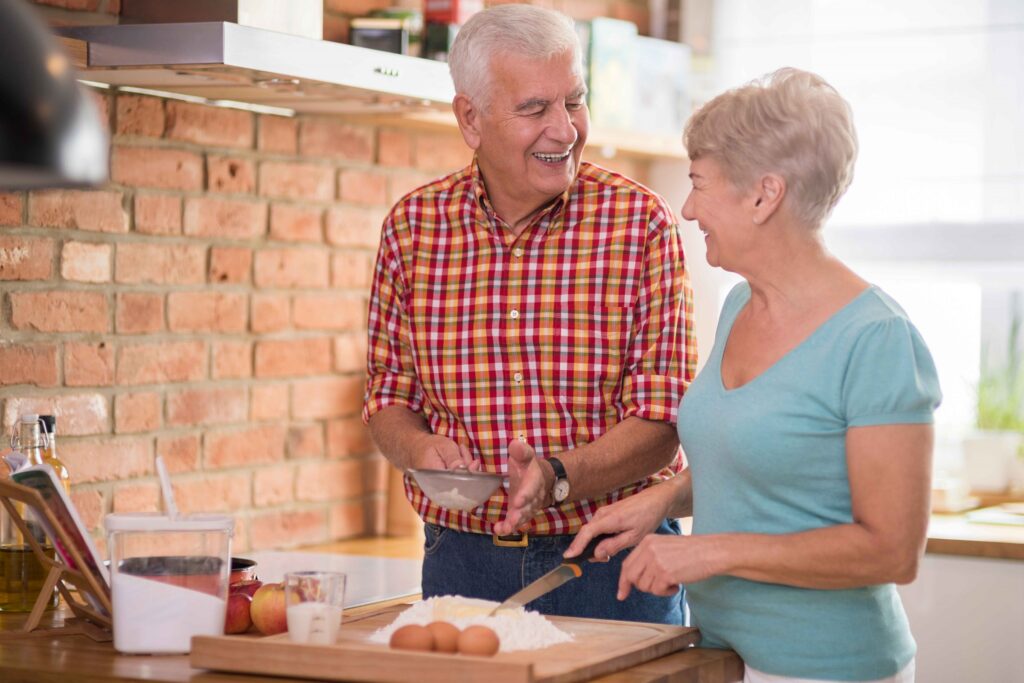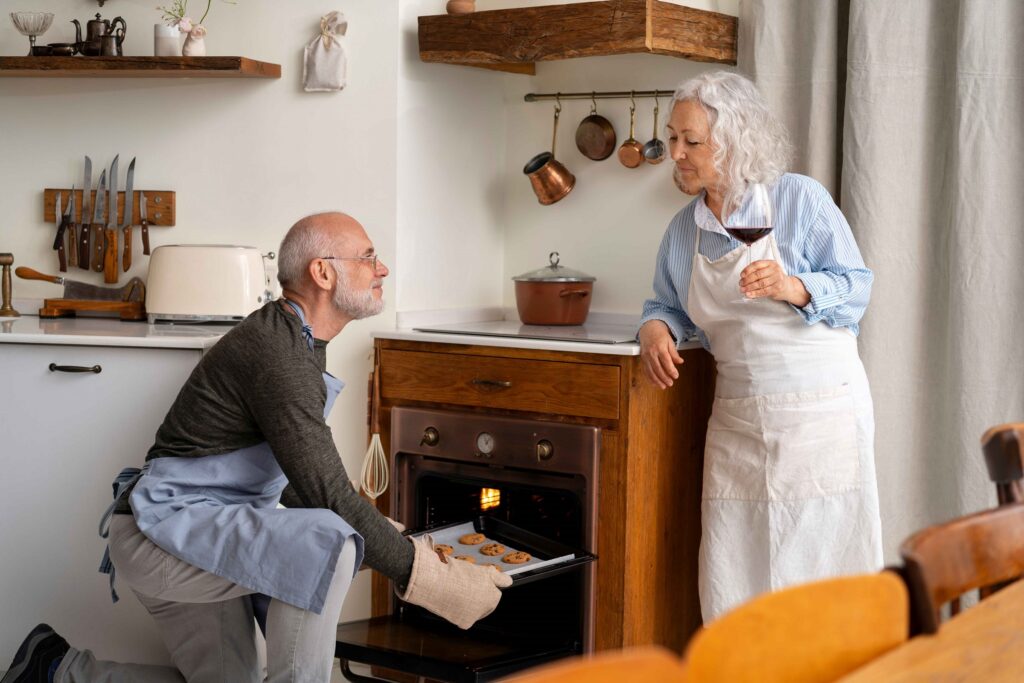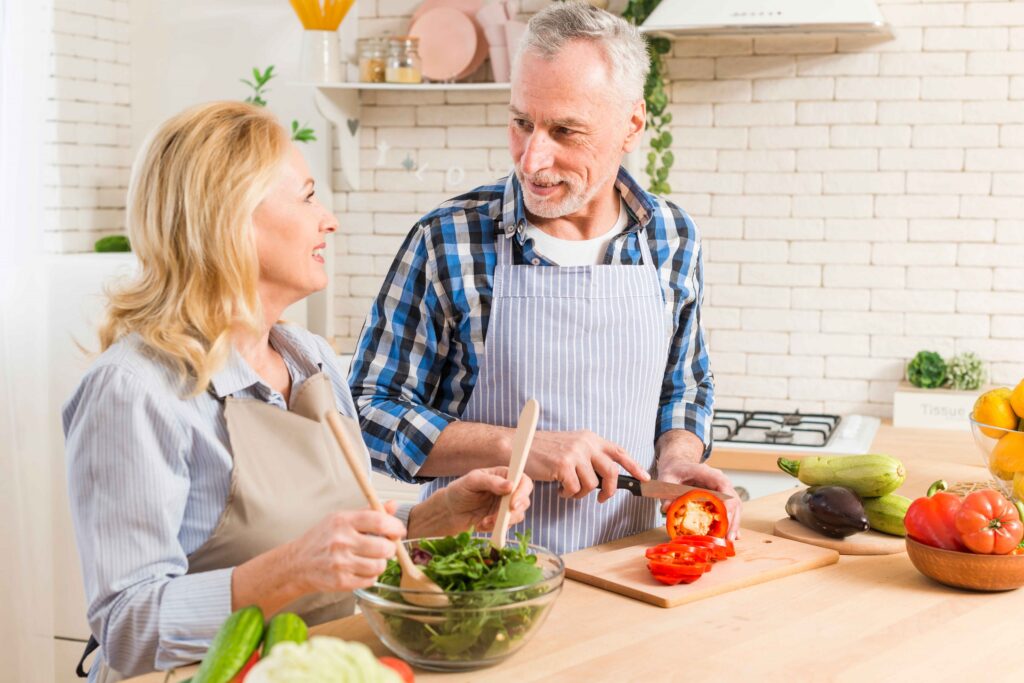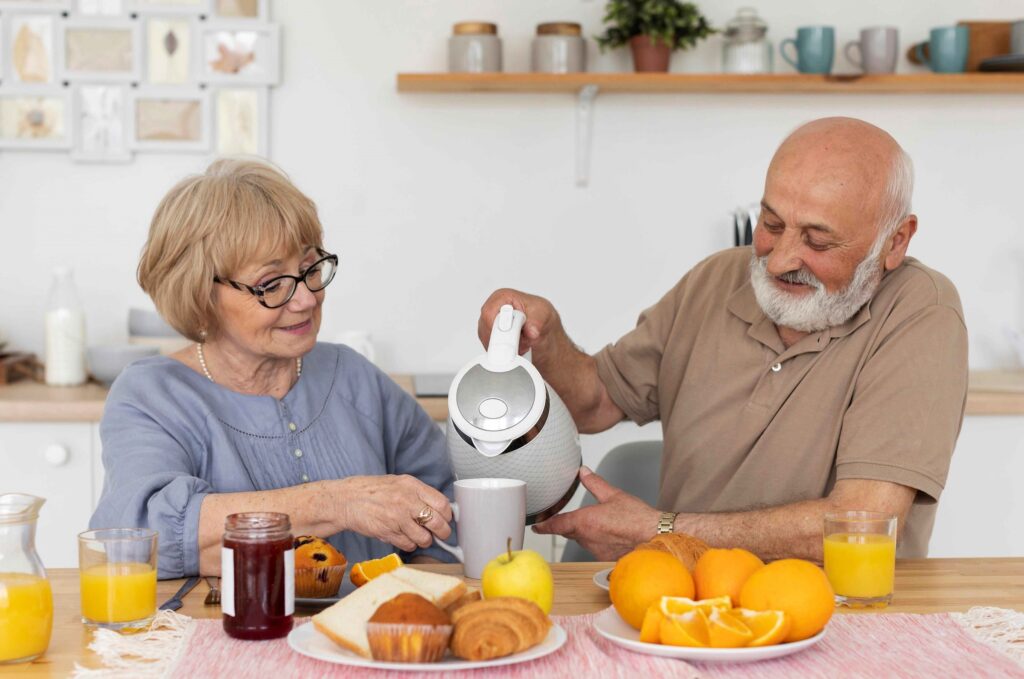Cooking can become challenging as we age due to mobility issues, reduced strength, cognitive changes, and dietary restrictions. However, with the right strategies, tools, and mindset, cooking can remain a safe and enjoyable activity. This guide provides practical tips to help seniors navigate the kitchen with ease and confidence.
Organizing the Kitchen for Efficiency
A well-organized kitchen minimizes unnecessary movements and makes cooking more convenient. Seniors should store frequently used items within reach to prevent excessive bending or stretching. Keeping countertops free from clutter reduces confusion and allows for a more functional space. Labeling spice jars, food containers, and pantry items with large fonts can help those with vision impairments. Installing pull-out shelves and lazy Susans also makes it easier to access ingredients and cookware without straining.
Choosing Senior-Friendly Kitchen Tools
The right kitchen gadgets can reduce physical strain and simplify cooking tasks. Ergonomic utensils with wide-grip handles make them easier to hold. Lightweight cookware helps prevent fatigue when lifting pots and pans. Electric can openers and jar openers eliminate the need for excessive hand strength. Adaptive cutting boards with stabilizing edges provide extra security when chopping ingredients. Appliances with automatic shut-off features enhance safety and reduce the risk of accidents.
Simplifying Meal Preparation
Meal preparation should be as simple as possible to minimize effort. Batch cooking and freezing individual portions can save time. Using pre-cut and pre-washed ingredients reduces the amount of prep work needed. One-pot meals, slow cookers, and instant pots are ideal for seniors as they require minimal supervision and result in fewer dishes to clean. Planning meals in advance also eliminates the stress of deciding what to cook each day.
Ensuring Safety in the Kitchen
Preventing accidents is crucial for senior-friendly cooking. Non-slip mats placed near the sink and stove prevent slips and falls. Bright, focused lighting helps reduce the risk of misreading labels or cutting incorrectly. Choosing appliances with large, easy-to-read controls improves usability. Wearing fitted clothing rather than loose garments prevents sleeves from catching on stove burners. Investing in fire extinguishers and ensuring that smoke detectors function properly can provide extra peace of mind.
Modifying Recipes for Ease and Health
Seniors may need to adjust their diets to accommodate changing nutritional needs. Opting for recipes with fewer ingredients simplifies the cooking process. Choosing softer foods can assist those with chewing difficulties. Reducing sodium and sugar intake supports heart health, while nutrient-dense foods provide essential vitamins. Using natural herbs and spices instead of salt enhances flavor while maintaining a healthy balance.
Incorporating Technology and Assistance
Technology can make cooking more manageable. Voice-activated assistants like Alexa and Google Home can set timers, read recipes aloud, or remind seniors to check their food. Meal delivery services provide nutritious, easy-to-prepare meals. Cooking apps designed for seniors offer step-by-step guidance through voice and video instructions. When necessary, family members or caregivers can assist with meal planning and preparation.
Encouraging Social Cooking
Cooking doesn’t have to be a solo activity. Engaging with others can make it more enjoyable. Cooking with family or friends can help seniors stay connected and share responsibilities. Community centers often offer cooking classes tailored for older adults. Potluck events reduce the amount of cooking required while allowing seniors to enjoy home-cooked meals with others.
Making Cleanup Easier
Post-meal cleanup can be challenging, but simple steps can make it more manageable. Using disposable liners and parchment paper reduces scrubbing time. Cleaning up as you go prevents a large pile-up of dishes. A dishwasher can minimize effort for those who have one. Minimal-cook meals like salads and sandwiches require little to no cleanup.
Conclusion
Cooking doesn’t have to become a burden as one ages. By making small modifications to the kitchen, using senior-friendly tools, simplifying meal preparation, and prioritizing safety, older adults can continue enjoying the pleasures of home-cooked meals. With thoughtful planning and a little assistance when needed, seniors can maintain their independence in the kitchen and savor the joy of cooking for years to come.
Other Articles

Solo Games for Seniors Living Alone: Stay Sharp, Stay Engaged
Living alone can be wonderful—no fighting over the TV remote, no one eating the last cookie, and you can play games any time you want! If you sometimes feel lonely

Magnesium and Sleep: Does It Work for Older Adults?
Safe Dosage, Benefits, and Risks for Seniors As we get older, sleep often becomes lighter, shorter, and less refreshing. Many seniors wake up several times a night, struggle to fall

How to Talk About Finances With Your Family After 60
Money can be one of the most difficult subjects to discuss within a family. For seniors over 60, conversations about finances often carry even more weight because they involve retirement

Hearing and Vision Changes After 60: What’s Normal and What’s Not
Aging brings many changes, and two of the most noticeable involve hearing and vision. For seniors, these shifts may feel frustrating, but they are often a natural part of growing

Ramelteon: A Safer, Non-Habit Forming Sleep Aid for Older Adults
Finding restful sleep can become surprisingly difficult later in life. Many older adults lie awake longer, wake up more often, or struggle to fall back asleep after a trip to

Book Review: Rewire for Wealth by Barbara Huson
When it comes to financial independence, most retirement books focus strictly on numbers — how much you need to save, where to invest, and how to spend wisely. But Barbara





